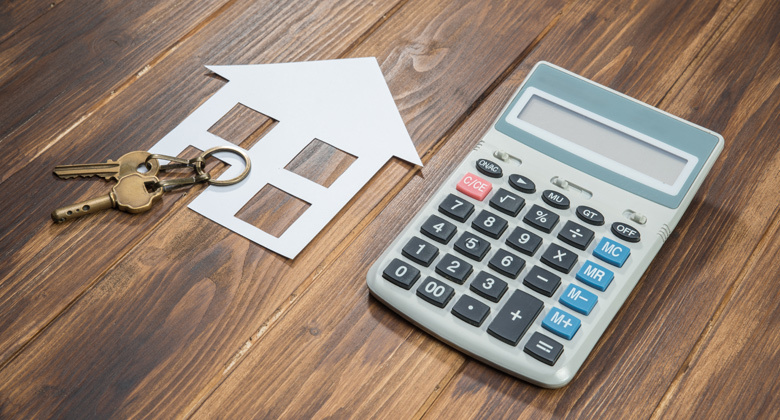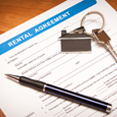How much does it cost to be a landlord?
If you're thinking about investing in a buy-to-let property, you're probably thinking about exactly how much it will cost to be a landlord. We take a look a look at all costs involved, from initial investment through to accounting for void periods.

How much is a buy-to-let mortgage?
Number one on the list, unless you’re lucky enough to be unleveraged and own outright,
a mortgage will be your biggest expense. Most mortgage lenders require a minimum 25% deposit so you’ll need a large cash outlay,
plus most also require an Interest Ratio Cover of 125% (in more recent news, some are requiring 140%). And from April 2017,
the restriction of mortgage interest relief will begin. By 2021,
it will no longer be tax deductible.
Are there are other fees when taking out a buy-to-let mortgage?
There are usually administrative fees associated with taking out a buy-to-let mortgage such as arrangement fees (averaging £1000),
which can often be added to the mortgage payments, booking fees (averaging £100) when processing a loan application,
valuation fees and solicitor fees, usually at a percentage of the mortgage price and rates will vary.
Do I need landlord insurance?
There are many different types of landlord insurance you can take out and costs will depend on the type of property,
the location and the occupation. Although not mandatory, you’d be wise to take out Landlord Buildings Insurance as an absolute minimum cover.
Most mortgage providers require you to take out a policy and may ask for proof that one is in place before approving a buy-to-let mortgage.

You could also look to take out emergency cover,
rent protection insurance and landlord contents insurance.
Many insurers offer multiple covers or add-ons to Buildings Insurance so be sure to do your research to get the best deal.

How much tax will I pay as a landlord?
When purchasing a property, you’ll need to pay stamp duty tax rates which increased to
a minimum of 3% in April 2016.
You’ll also be taxed on the rental income, minus allowable deductions. With mortgage interest relief being restricted from 2017,
many landlords are considering starting a business to manage their properties through: just make sure you are aware of business tax rates,
which are currently at 20% (but at least that’s on revenue minus costs!).
How much will I pay in letting agent fees?
This will largely depend on how much you self-manage your property.
For full property management and tenant introduction from a high street agent, expect to pay a fixed fee of around £500 plus monthly commission charges ranging from 6-12% of rent income.
If you choose to find tenants yourself, you can use classified ads, social media, word of mouth or an online agent,
like Upad (prices starting from only £120 incl vat).
You’ll also need a good quality inventory, as this will be important when it comes to the end of the tenancy.

What professional fees do I need to pay as a landlord?
You may need to pay professionals during your course of business as a landlord and this could include accountant and legal fees,
which can be charged either as an hourly rate or a fixed fee for a one off service.
Many landlords are members of landlord associations such as the National Landlords Association (NLA) with prices starting from £89 for a year’s membership.
What are the costs of ongoing maintenance in my buy-to-let?
As a landlord you will be responsible for maintenance costs in your buy-to-let, as you would as a homeowner.
These include keeping the exterior structure in good repair and maintaining installations for sanitation, gas, electricity and water.
You should keep aside some cash for general maintenance, just in case. Most property management companies keep a float of around £200.
What are the running costs as a landlord?
As with any business, you’ll need to account for running costs as a landlord.
If you self manage and run a home office then you’ll need to account for utilities, stationary and the cost of producing paperwork.
If you hire staff to carry out admin, you’ll need to pay them a wage.
What will it cost to repair and replace items in my buy-to-let?
It’s difficult to put a figure on this, as you can’t foresee the break down of, say, a boiler.
When providing items in your buy-to-let, consider the lifetime of that product and expect at least 1 repair during that cycle to make sure you’re covered financially.
Decorating is easier to account for and you should plan to do some light decorating (painting/ re-grouting) in your buy-to-let every 2 to 3 years.
What will I pay in case of an emergency repair in my buy-to-let?
This will depend on the severity of the emergency but if you’re checking and maintaining items as you go along,
you’re less likely to encounter a serious emergency.
Have a direct line of communication with your tenants so they quickly report any issues and avoid something small becoming a catastrophe later down the line.
It’s recommended to take out emergency cover insurance and it can usually be added to your existing policies for buildings,
contents and public liability insurance.
How much wear and tear allowance do I get?
From 2017, landlords will no longer receive a 10% wear and tear allowance,
instead you’ll be able to claim tax relief on furniture you have purchased for your buy-to-let.
But remember, this is just tax relief so don’t spend more than you need to without comprising on longevity and quality of the furniture.
How much does a void period cost?
Every landlord should factor in void periods. Void periods are time when tenants do not occupy your property, and you aren’t receiving any rental income.
This could be because of seasonal effects, refurbishment works or repair works. Obviously you’ll want to keep voids to a minimum,
but factor in 4-8 weeks a year into your finances. You may also have to pay council tax during a void period,
but this will depend on your local council so contact them to see if they have offer any relief.
You’ll also need to cover utility bills whilst your buy-to-let is unoccupied.
What do I do if my tenant doesn’t pay rent?
If you have rent protection/ guarantee insurance you should contact the insurer to discuss when and how you can claim for missed rental payments,
also check if there is an excess to pay. Most importantly, you should keep an open line of communication with your tenant to discuss why they aren’t paying and when it will be resolved.
Although no landlord wants to think about the prospect of a tenant not paying rent, it’s best to have a contingency plan.
Especially considering that it was reported that there were 86,200 tenants owing more than 2 month’s rent in 2016.
How much does it cost to evict a tenant?
Eviction costs range between £800-£1200 depending on whether you represent yourself or hire a reputable company to do this for you.
It also depends if the eviction reaches court, many tenants leave on service of a Section 8 notice of possession.
How much will be my legal responsibilities as a landlord cost me?
Landlords are heavily regulated when it comes to gas safety, deposit registration,
licenses, smoke detection and energy performance of a property.
Costs will vary but expect to pay the following:
- Gas safety certificate: £100 annually
- EPC: £100 every 10 years
- Tenancy deposit registration: £40 for every new or renewed tenancy
- Smoke / carbon monoxide alarms: £10 per alarm
- License: varies depending on local council












